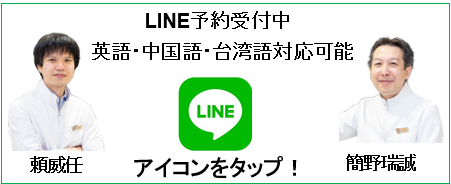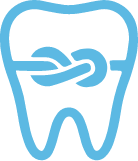Adult Orthodontics
The Difference between Child and Adult Orthodontics
Most think orthodontics is a treatment for youth. This is just a myth,
orthodontics does work for elders, and is also effective to move teeth
of older patients. Someone say that teeth movement is slower and cause
more pain. These are also misunderstandings, pain and speed of
movement do vary, but according to individual character, not age.
Basically, the aim of adult orthodontics differs from child
orthodontics. Jaw bones of children are not completed, so the main aim
is to modify the growth (Stage I). Adults do not have growth
potential, so we can only align teeth coordinating to the completed
jaw bones. In summary, child orthodontics is for “jawbone guidance”,
and adult orthodontics is for “teeth alignment only”. However, the
range of adult tooth movement is now excessive than most imagine, even
without bone modification. Most adult cases can be treated except few
cases with large bone discrepancy. Orthodontics can change the
appearance, smile, function, health, and life. Please consult us if
there is anything that concerns you.
Issues of Adult Orthodontics
Understanding the Physical Condition
Adult orthodontics without surgical approach cannot change the skeleton, as we have described. Thus, it is very important to understand the present physical condition of facial part, which is totally different in every patient, at first. The facial skeleton, lateral facial profile, smile line, and soft tissue (togue and gingiva) should be examined carefully first. And then set a plan based on academic evidence base to coordinate tooth alignment to fit them. This is “individual skeleton-based treatment”.
Obtain Functional Occlusion
Orthodontics is not all for cosmetic purpose. Our doctors dedicated on
orthodontics in Tokyo Medical and Dental University, whose orthodontic
treatment lay great emphasis on correcting occlusal functions.
Appropriate masticatory function does not cause excessive loading to
stomach and intestines, correct muscular function lead to correct
pronunciation and swallow. Moreover, functional occlusion induces
esthetical alignment spontaneously.
Surgical Orthodontics Collaborating with Other Clinics
Severe skeletal problems should be considerate to treat by surgical orthodontics. This is a treatment covered and incorporated by national medical insurance in Japan. We are sorry that our clinic does not apply insurance presently. Therefore, the patients are judged to be applied to surgery, we will refer them to our collaborating clinics or hospitals.
Clear and Esthetic Braces
Traditional labial (front side of teeth) orthodontics is treated with
wires and braces. Labial orthodontics is the most mature and completed
technique. Though many new techniques have appeared recently, it is
still the most effective and efficient method for both doctors and
patients.
Thus, we use this technique mainly. In the rest of
world, metal braces are major, but clear braces are used in almost all
cases in Japan. Esthetics during the treatment is much increased with
these appliances.
Advantages of Labial Orthodontics
- Indicated to all cases with different difficulty.
- Cost less than other orthodontic techniques.
- Variable devices can be selected.
- Developed for a long history, the most mature and effective technique.
- Move teeth most efficiently, thus take the least treatment duration.
- During regular follow-up visits, the dentist and dental hygienist monitor tooth movement closely, allowing potential treatment errors to be detected and corrected at an early stage.
- Unlike clear aligner treatments, wire-based orthodontics are adjusted directly by the dentist, providing patients with a greater sense of treatment progress and reassurance.
Comparison of Labial Braces and Clear Aligner Orthodontics
| Appliance | Labial Wire Braces | Clear Aligner Orthodontic System |
|---|---|---|
| Appearance | As the appliance is placed on the front surface of the teeth, it is more noticeable. However, white brackets or white wires can be selected to reduce visibility. | Transparent aligners are used, making them barely noticeable. Small white attachments may be placed on the teeth when necessary. |
| Applicable Cases | Suitable for a wide range of orthodontic cases, including severe malocclusion and cases requiring tooth extraction. | Best suited for mild to moderate malocclusion. Severe cases or those requiring significant tooth movement after extraction may be difficult to treat. |
| Self-Management | As the appliance is fixed, little self-management is required. However, food may easily become trapped around the appliance during meals. |
Requires strict self-management, including wearing the aligners for the prescribed duration, typically over 20 hours per day. There is also a risk of losing the aligners during treatment. |
| Oral Care | Food debris and plaque tend to accumulate around the appliance, making thorough brushing essential. Temporary gum swelling may occur due to bacterial buildup (this usually resolves after treatment). |
The aligners can be removed during meals and brushing, allowing normal oral hygiene and easier maintenance of cleanliness. Aligners can also be temporarily removed for special events if needed. |
| Pain | Wire ends may irritate the cheeks, causing mouth sores or stronger discomfort. | Teeth are moved gradually with relatively gentle force, so pain tends to be milder. |
| Visit Frequency | Typically requires visits every 3 weeks to 1 month. *Some clinics schedule visits every 3 weeks to ensure smoother treatment progress. | Visits are usually required once every 1 to 3 months. |
| Diet | There are no dietary restrictions, but food may become trapped in the appliance. | Since aligners are removed during meals, there are generally no dietary restrictions. |
| Metal Allergy |
Allergy risk can be reduced by selecting highly biocompatible brackets and wires. *Patients with metal allergies are strongly advised to inform their dentist in advance. |
Does not cause metal allergies |
Retreatment Orthodontic Plan
Since teeth continue to shift throughout life, even individuals who have undergone orthodontic treatment as children may experience misalignment after the retention period ends. For those facing such concerns, our clinic offers a Retreatment Orthodontic Plan. Please feel free to contact us for more details.
Q. What are the differences between orthodontic treatments at a general dental clinic and a specialized orthodontic clinic?
A. I will explain the respective advantages and disadvantages.
In the case of a specialized orthodontic clinic
Advantages
- As orthodontists are full-time, they can respond quickly to issues during treatment (such as appliance detachment, dealing with wire ends poking the cheek).
- A wide range of treatments (front side, back side, mouthpiece correction) can be proposed.
- Since the director is an orthodontist, stable long-term treatment can be provided.
- Equipped with the necessary facilities for orthodontic treatment (dental CT, head X-ray standards).
- Easier to schedule appointments according to your wishes (leading to possible reduction in treatment period).
Disadvantages
- Cannot treat cavities before or during treatment.
- Extractions are performed at other clinics.
In the case of a general dental clinic
Advantages
- Parallel treatment of cavities and orthodontic treatment is possible.
- Can handle extractions.
Disadvantages
- If the orthodontist is part-time, there may only be 1-2 clinic days per month, and immediate response to treatment issues might not be possible. Also, less flexibility in appointment scheduling.
- Part-time orthodontists may resign during treatment, leading to unclear responsibility and costs.
- Often, the dentist in charge of orthodontics is not a specialist, limiting the treatment methods and applicable symptoms.
- Lack of specialized orthodontic equipment and X-rays (especially head X-ray standards) is common.
Q. I recently came across the term “Evidence-Based Medicine.” What exactly does it mean?
A. EBM stands for “Evidence-Based Medicine,” which is generally referred
to as medical care based on evidence. It was proposed in 1991 by a
Canadian researcher named Guyatt and has since spread worldwide. The
“evidence” emphasized in EBM refers to scientific evidence—particularly
the results of studies that have confirmed the effectiveness and safety
of treatments on large groups of people. EBM aims to provide better
healthcare by combining the best available evidence with the clinical
expertise (skills, experience, etc.) of practitioners and the values and
preferences of the patient.
(Quoted from Japan Council for Quality Health Care – minds Basic
Knowledge of Key Terms)
Some people who ask questions seem to understand things with an
emphasis on the perspective that they are based on scientific
evidence,
● but the doctor’s skills and clinical experience
● and the patient’s values and preferences
are also important elements that are reflected in the care.
At our clinic, we strive to develop and propose treatment plans that
reflect each patient’s values and preferences through careful
explanations and conversations before starting treatment.
Q. What does it mean to conduct detailed examinations, diagnosis, and treatment planning?
【Understanding the Starting Point ①: Detailed Examination & Data Collection】



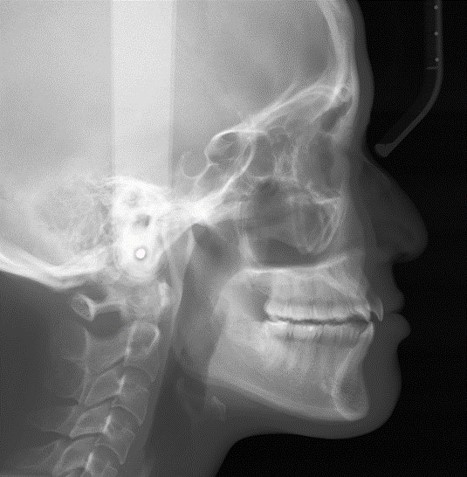


【Understanding the Starting Point ②: Numerical Analysis】
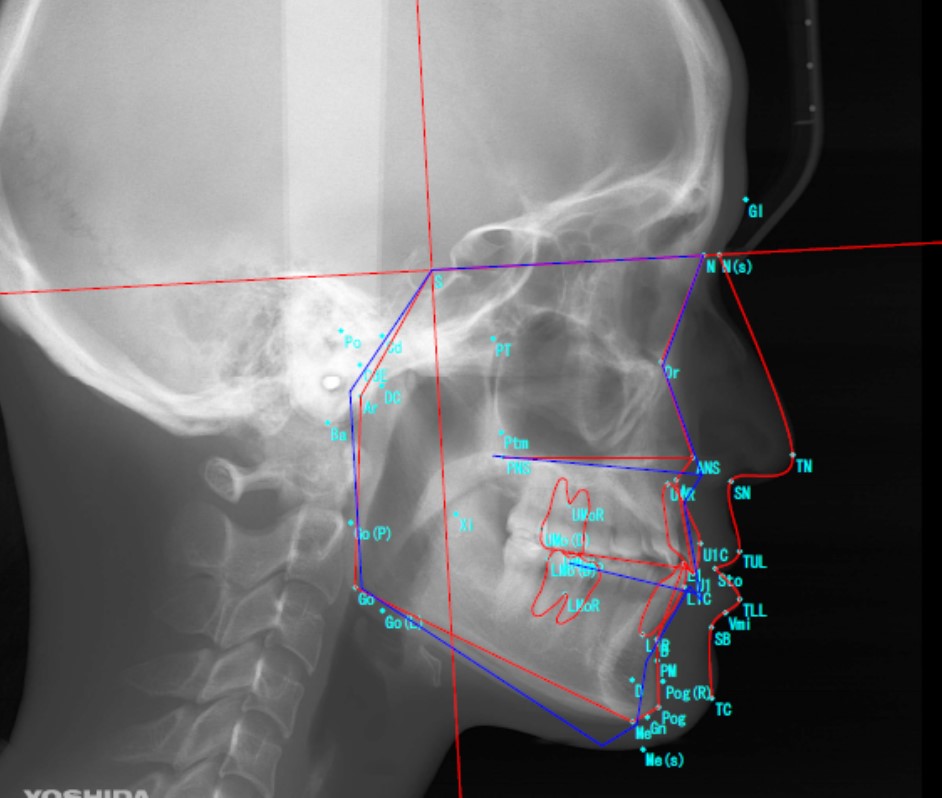
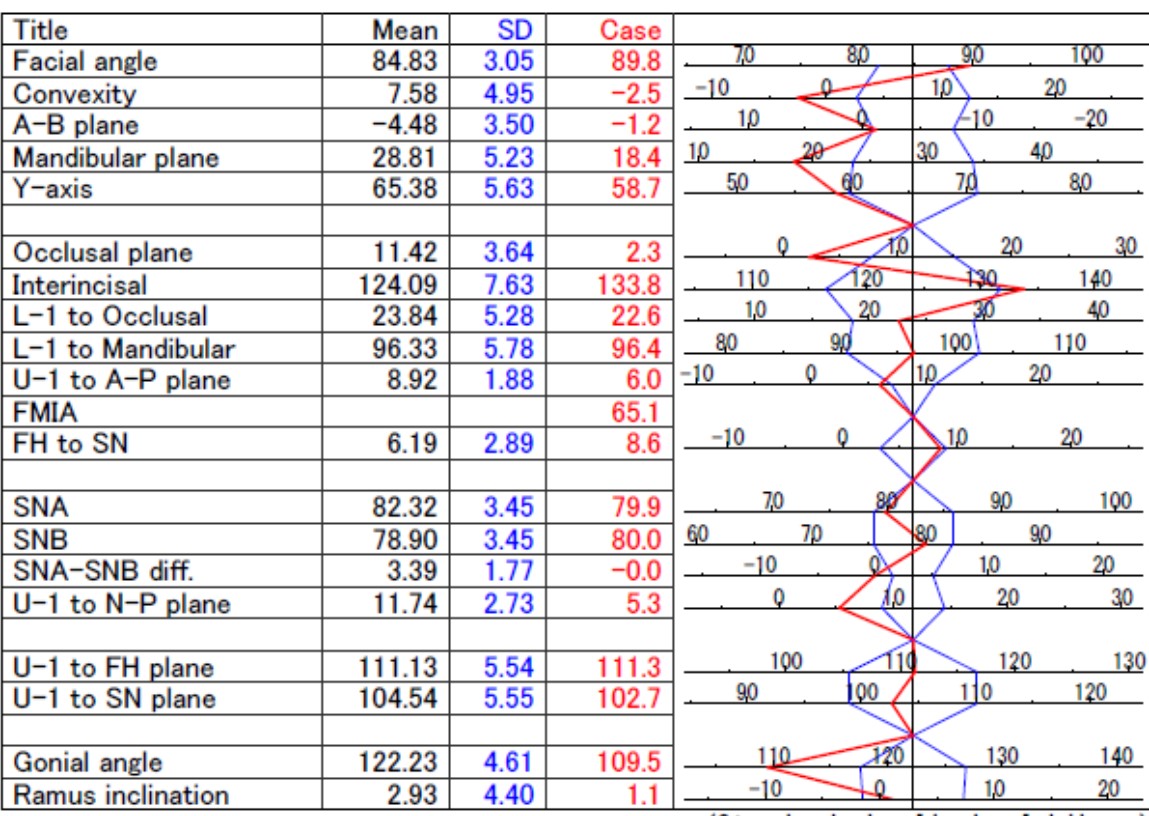
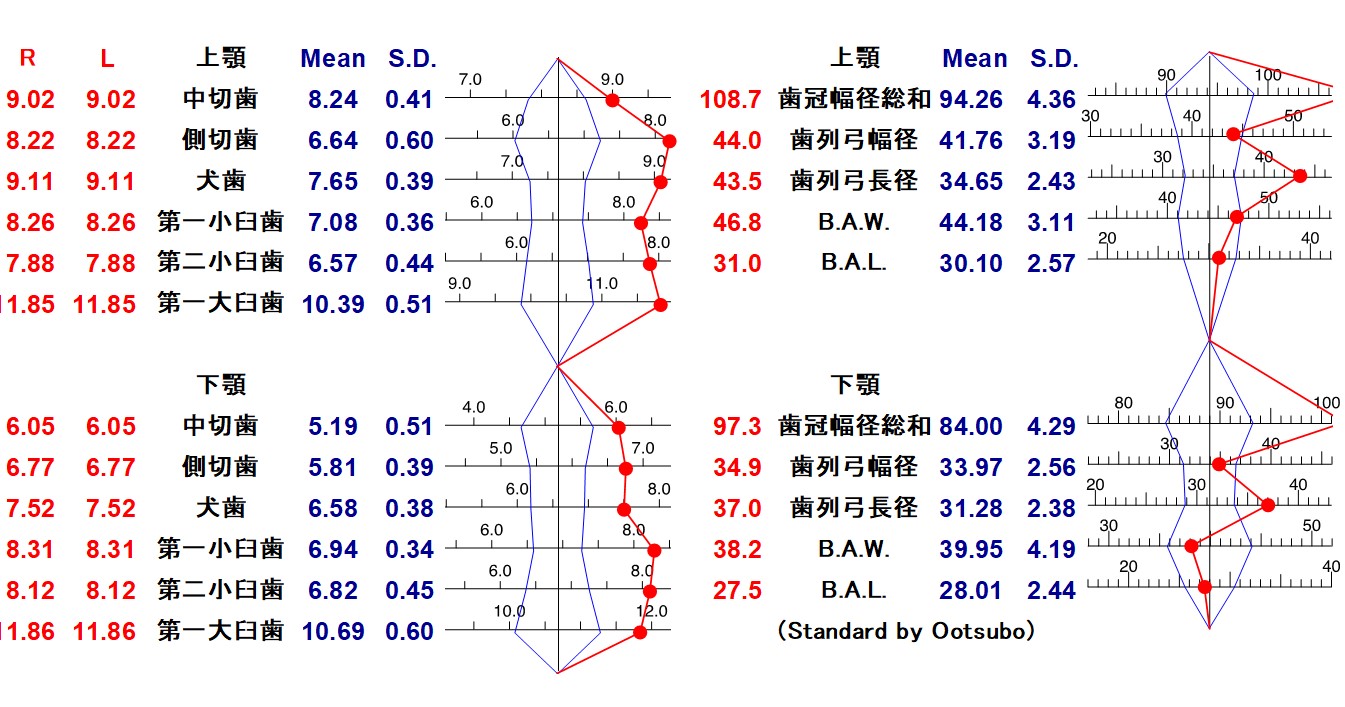
【Setting the Goal: Diagnosis & Treatment Planning】

- Presentation of whether extraction will be necessary or not
- Presentation of treatment process (order of tooth movement)
- Presentation of the treatment device (method)
- Presentation of the approximate treatment duration
Q. How is the treatment plan or policy determined?
A. As shown in the diagram below, we present a treatment plan or policy by considering both the patient’s preferences—such as whether extractions are necessary, achieving functional occlusion and bite, treatment duration—and the feasibility of tooth movement from our professional perspective.
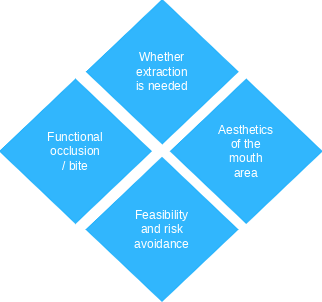
- ・Whether extractions are needed
- ・Functional occlusion / bite
- ・Aesthetic appearance of the mouth area
- ・Feasibility and risk avoidance
Q. What does “adjustment” mean during regular follow-up visits after starting treatment?
A.“Adjustment” refers to checking whether your teeth are moving according to the treatment plan based on the diagnosis and making necessary modifications for the next step. These modifications may include bending the wire in traditional braces or replacing attachments in clear aligner treatment. Although the term “adjustment” is widely used, it actually refers to a regular follow-up visit for treatment. Additionally, if the teeth have not moved as planned, we will take corrective measures, identify the reasons for the deviation, and continuously evaluate the treatment process. Regular follow-up visits for “adjustment” play a crucial role in ensuring the best final outcome of your treatment.
| Adult Orthodontics | Clear Plastic Braces with Metal Wires | ¥770,000 |
|---|---|---|
| Clear Ceramic Braces with White Wires | ¥880,000 | |
| Metal Braces with Metal Wires | ¥715,000 |
※Because the amount is large, installment payments are possible. There
are no fees.
There is no upper limit on the number of
installments, but as long as you can pay by the time the orthodontic
device is removed, there is no problem.
※In most cases, the
basic treatment fee covers all device costs (without additional
charges), but sometimes special auxiliary devices are necessary. In such
cases, we will explain and, with your consent, charge the additional
cost at actual expenses.
Utilization of Digital Equipment
Our clinic uses a simulation software that integrates data from an intraoral scanner “iTero” and a dental CT to visualize information about your mouth. It is not widely known, but teeth are aligned on top of the jawbone. This simulation software visualizes the limit of movement and safe position of teeth during orthodontic treatment, thereby providing a safe and secure orthodontic treatment while avoiding risks such as gingival recession.
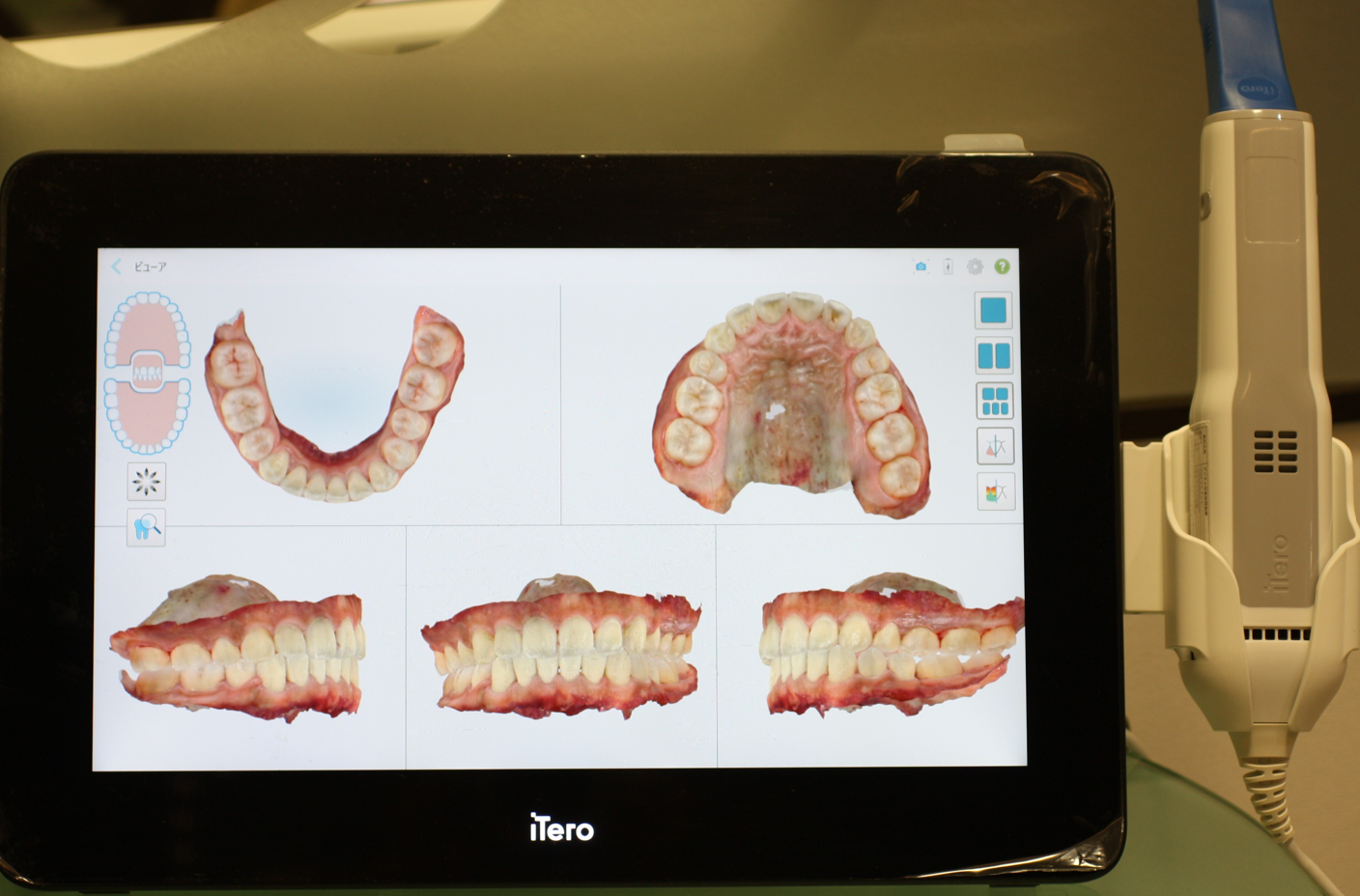
【Intraoral Scanner】
We scan the current alignment of your teeth and reproduce it on the monitor.
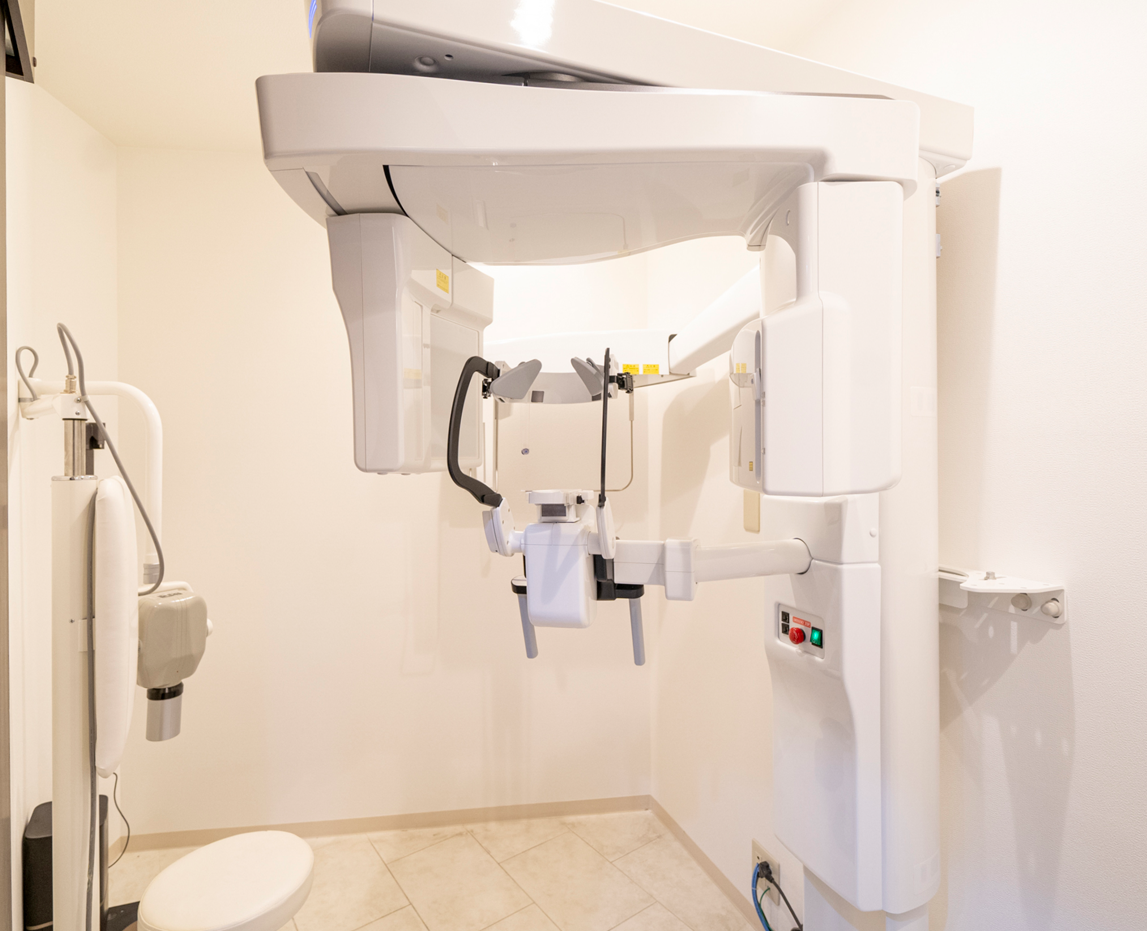
【Dental CT】
We obtain information about the thickness of jawbones, shape of teeth, temporomandibular joints, etc., using low-exposure CT imaging.
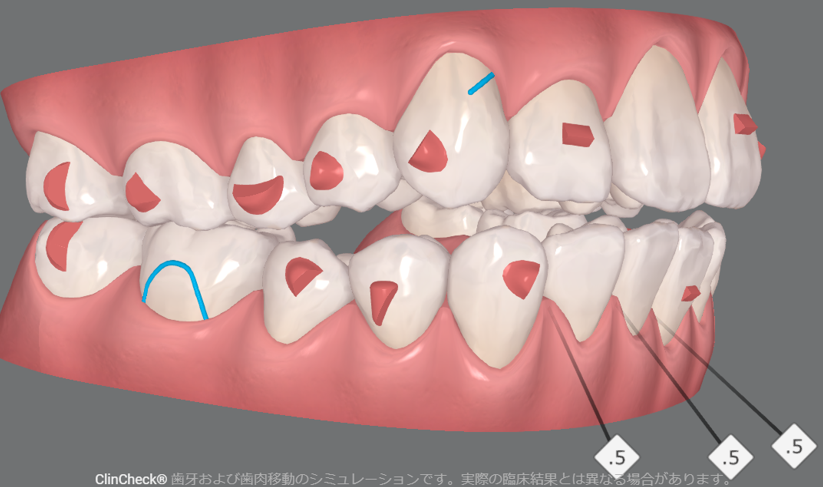
【Simulation Software】
We integrate the information about your mouth obtained from the intraoral scanner and dental CT, and show you a simulation plan of the treatment.
Combined treatment with dental orthodontic anchor screws
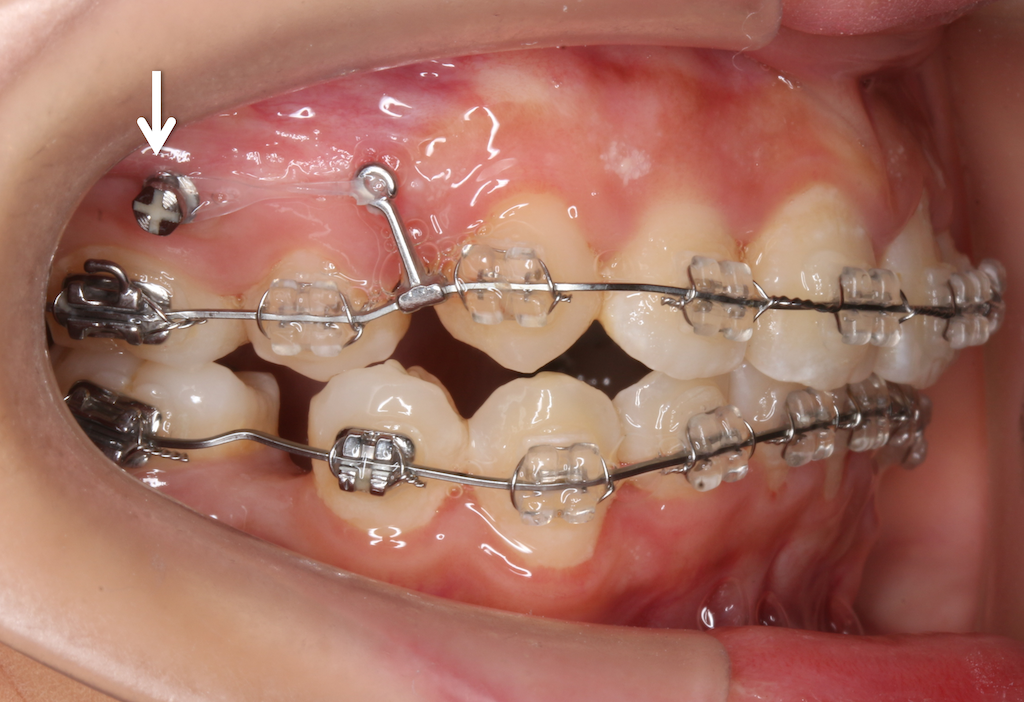
Anchor screws refer to small titanium screws with high biocompatibility,
measuring about 6mm in length and 1.5mm in width. They serve as a fixed
source for moving teeth during orthodontic treatment and are temporarily
implanted in the jawbone. This method allows for a broader range of
tooth movement, enabling more aggressive treatment, as well as reducing
treatment time and improving outcomes.
Our clinic offers
treatments that utilize these dental orthodontic anchor screws, tailored
to the patient’s symptoms.
Essential Work by Dental Hygienists
Cleaning & Guidance During Treatment
During orthodontic treatment, wearing appliances makes brushing more difficult. To prevent cavities and periodontal disease, we offer personalized cleaning sessions during regular visits.
Tartar Removal
Plaque that remains on uncleaned areas hardens into tartar over time. We carefully remove this tartar using an ultrasonic scaler.
Tooth Surface Cleaning
We check areas where plaque accumulates and explain common spots that are often missed during brushing. Using a special toothpaste and a rotating brush tool, we thoroughly clean the tooth surfaces.
Treatment Duration and Frequency of Visits
General Orthodontic Treatment Duration
Since all patients have different condition and initial alignment, it is difficult to estimate the treatment duration uniformly. But in general, it takes 2 years in average for “active treatment” which is the duration wearing braces. The mechanism of tooth movement is to disrupt the surrounding bones of teeth and then regenerate them, thus the velocity is biological limited. We cannot move teeth too quickly that damage tissues.
Frequency of Visits
The cycle of tooth movement is about 3 weeks, so we usually ask patients to come once in a month for wire adjustment. If it is not possible to take an appointment so frequently, for the reason such as living a distant place or being busy, we can elongate it. And we will adjust the devices fitting to the appointments.
Retention
After the braces removed, the “retainer” is necessary to keep the treated alignment. There are several types of retainers, but most of them are removable. The duration of retention is about 1 year for 24 hours. If the alignment of teeth become stable, the retainer can be worn only during sleep.
“This Isn’t What I Expected From Orthodontics!” — We Offer Solutions
Our Clinic’s Expertise in Specialized Orthodontic Treatment
- I started treatment with the popular clear aligners recently, but I’m mentally exhausted from constantly wearing them and my treatment isn’t going as planned. I wish I had chosen wire braces instead.
- My concern about my teeth alignment has been resolved with wire braces, so now I want to switch to a less noticeable appliance.
As shown above, it’s not uncommon for your concerns to change during different stages of orthodontic treatment. Our clinic allows switching between different orthodontic appliances.

- Wearing aligners continuously is mentally exhausting
- I’m not satisfied with the results of my clear aligner (Invisalign) treatment
- Frequent visits for wire braces have become a burden, so I want to switch to aligners for the final phase
- Though I’m using wire braces, switching to aligners might be more beneficial considering my current symptoms
- I started with wire braces, but due to moving or a job transfer, I want to switch to aligners to reduce clinic visits
The Procedure of Treatment
At first visit, we will ask you about where you want to improve and your request. Then we will tell you the estimated total fee and approximate treatment plan. If you have any problem about tooth alignment, please consult us freely. This consultation is free of charge and is available for multiple times. Moreover, it is also available to consult us online through consultation form. Please feel free to contact us.
If you have decided to be treated in our clinic, we need to have an examination including impression, photo and X-ray taking. Please do not worry about the exposure of X-ray since our machine is digital with very low dose.
We analyze the materials from examination carefully at first. Then develop a plan fitting to the patient’s individual condition and request. We will also refer the patient to our collaboration clinics to have general dental treatment if necessary.
Deliver braces or other orthodontic devices. It takes longer time in this appointment. We also explain the precautions to patient at the first time.
Let patients have daily life with orthodontic devices. We need to check and adjust the appliances regularly. In general, appointment is taken once a month.
After goals of orthodontics completed, we remove the devices. The alignment is not stable at this point, so the retainers are necessary to be wear.
After active is finished, we still need to follow up the stability of dentition and check the occlusion regularly. It is also necessary to clean and check the fitting of retainers. However, the frequency of visit may be reduced much than the active treatment.
Our Counseling Policy
- 1. We respect the wishes and feelings of our patients regarding their treatment.
- 2. In explaining to patients and responding to questions, we avoid difficult medical terms and provide clear answers.
- 3. We value a trust relationship that begins with active listening.
- 4. By presenting the advantages and disadvantages of each treatment method, we aim to prevent as much as possible the asymmetry of information between doctor and patient.
- 5. The chief physician Kanaya and the deputy chief physician Rai will be in charge from counseling to treatment.
We believe that the opportunity for an initial consultation is not just about choosing or being chosen for a treatment method, but a time to better learn about orthodontic treatment and to engage in dialogue. We hope this will alleviate any anxiety and deepen understanding of orthodontic treatment. Please feel free to make an appointment for an initial consultation and visit us.

